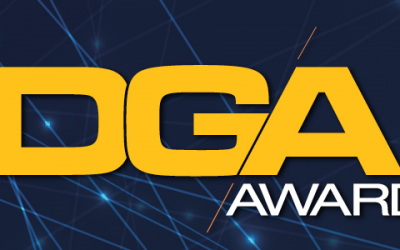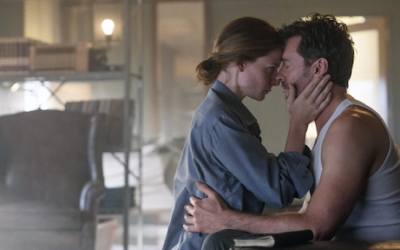Source: The Hollywood Reporter
If there’s one thing that Hollywood dreads more than an industry-wide strike that forces nearly all of its major productions to come to a halt, it’s two industry-wide strikes that force nearly all of its major productions to come to a halt. Unfortunately for the studios that call Tinseltown their home, there’s a very strong chance that they will be faced with such a predicament in the near future. They’re already at a standstill due to the Writers Guild of America (WGA) going on strike starting last week, and if negotiations with another major labor union don’t go swimmingly, that union may also take to the streets and join the WGA in their picketing. That other union: the Directors Guild of America (DGA), rivaled perhaps only by the Screen Actors Guild of America (SAGA) as the most prominent union with the greatest amount of influence in the industry. At the moment, no plans have been cemented by the DGA to go on strike, but if talks with the Alliance of Motion Picture and Television Producers (AMPTP) go about as well as those between the AMPTP and the WGA did (which is to say not well at all), one should expect a second strike to commence within Hollywood.
As of Wednesday, May 10th, leading representatives of the DGA has made its way to Sherman Oaks, a neighborhood in Los Angeles, California, to engage in negotiations with the AMPTP for a contract that will hopefully satisfy the needs of the guild’s roughly 19,000 members, talks that will undoubtedly be especially contentious due to the WGA strike progressing a little bit further out in the city. Though the DGA and the WGA claim to be prioritizing separate issues in their push for a better deal, one can easily detect an overlap in what each guild is asking for (which, given how many individuals are both writers and directors and therefore have affiliations with both guilds, should not be too surprising). With the current contract set to expire on June 30th, the DGA and AMPTP have less than two months to come to a satisfactory agreement. Such an agreement, as of this writing, may be a bit too difficult to reach before the current deadline, if a statement sent to the DGA’s thousands of members in February claiming that the studios are “not yet prepared to address [their] key issues” is any indication. “We know there will be conflict,” one DGA member claims. “The battle will test us… the stakes are pretty dire.”
The rise of streaming has seen the rise of many issues that are being discussed in these negotiations, from lower residuals to shorter television series that reduce the number of episodes producers and the amount of potential payment each director may receive. Residuals in particular have been a major topic of contention for the DGA, as the guild claims that the current subscriber-based business model that streaming utilizes makes it difficult to understand how much a director may receive for a given work, especially if only data from the United States and Canada is taken into account instead of the world as a whole. “Under our current formula,” the guild explained in a video statement released to its members, “no matter how many millions of global subscribers a service might have, the Studios only pay you a fraction of the domestic residual to compensate you for all of the global audiences that enjoy your work.”
Outside of this demand for greater data transparency, other topics currently being discussed include improvements to the current health and pension plans, raising the current wage floors, stronger protections for directors’ creative rights, an allowance of greater diversity and inclusivity within the directorial field, and the institution of more effective safety standards, all of which fail to meet the satisfaction of most of the DGA’s membership. For one member of both the DGA and the WGA, Thom Harp of “The Donor Party” fame, it’s the need for better safety standards that’s especially critical, as he recalls the sixteen-to-eighteen hour shifts he would often work as a production assistant before moving upward to become a director. “[On longer days], you do get paid more [in overtime],” Harp notes, “but money isn’t worth a life.”
Easily the biggest priority for the DGA though, as it has recently become for just about every creative working in the entertainment industry right now, is the subject of artificial intelligence, something that could potentially be used to replace these talents for the sake of the studios not needing to pay wages, a situation that nearly every union finds unacceptable. It’s the use of AI screenwriting that is said to be the major driving force for the current WGA strike; to put it bluntly, studios are eager to use AI for the creation of film and television scripts, but the writers are not, especially if it’s their own past work being used to feed these algorithms without granting the writers their fair share of the profits. This refusal on the studio’s behalf to display any care for the WGA’s concerns has proven equally alarming for the DGA, and its members hope that their talks with the AMPTP will be more successful, even if they’re well aware that they will most likely not fare any better. “One of the issues on my mind is how to achieve a balance between the positive uses of AI and the possible disruption of the job force,” one anonymous DGA member writes. “We need to figure out how to keep it from taking control of us,” a second anonymous member states.
It will be incredibly difficult for both the DGA and the AMPTP to ignore the ongoing WGA strike as they engage in negotiations, and while the former may not always see eye to eye with its writer-centric fellow union, there are plenty of issues where the two groups are more or less perfectly aligned in their stances. They both seek higher wage floors, they both want the residual payment process to be changed to better reflect the growth of streaming throughout the world, and they both want the data collected by Netflix, Amazon, and other companies that generate a bulk of their profits through global streaming to be made more publicly available. For someone like Harp, who serves as a member of both the DGA and the WGA, these are issues that need to be addressed, and in spite of everything, Harp seems confident that they will be in the end. “It’ll likely be tougher this time around than in the past,” Harp admits, “but I think they will ultimately get some hikes in minimums and eventually get a new contract that addresses the changing landscape.”




